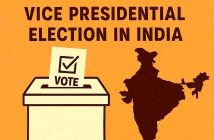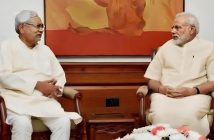The Aam Aadmi Party’s bold entry into Bihar’s 2025 elections is shaking up the political battlefield. Contesting alone, AAP aims to disrupt the dominance of RJD, Congress, and BJP with its anti-corruption message and welfare promises. As voter frustration grows over unemployment and migration, can AAP’s Delhi-Punjab playbook win Bihar’s diverse electorate? Political rivals are rattled, alliances are strained, and vote splits loom large. With a lean ground game and big ambitions, AAP’s impact on Bihar 2025 elections redefine Bihar’s future—or fizzle out. The stakes are high, and all eyes are on October and November 2025.
Bihar’s 2025 assembly elections, set for October-November, are poised for a dramatic shake-up. The Aam Aadmi Party (AAP), led by Arvind Kejriwal, has announced it will contest all 243 seats independently, a bold departure from its past alliances. Known for its governance in Delhi and Punjab, the AAP is banking on its anti-corruption stance and welfare schemes to woo Bihar’s voters, who are frustrated by unemployment and migration. This move threatens to split opposition votes, challenging the RJD-Congress Mahagathbandhan and the BJP-led NDA. With a young, diverse electorate and regional complexities, Bihar’s political landscape is ripe for disruption. Will AAP’s entry reshape campaign narratives or merely dilute the opposition? As rivals react and voters weigh options, AAP’s gamble could redefine Bihar’s political future.
Key Details
- Aam Aadmi Party (AAP), led by Arvind Kejriwal, with local leaders like Sandeep Saurav.
- AAP contests all 243 seats in Bihar’s 2025 assembly elections independently.
- Elections are scheduled for November 2025, with results expected in mid-November.
- Bihar, across urban and rural constituencies, including Patna, Darbhanga, and Muzaffarpur.
- To disrupt Bihar’s politics with anti-corruption and welfare-focused campaigns targeting youth and marginalized voters.
Background: Bihar’s Political Landscape in 2025
Bihar’s politics is a complex mix of caste, regionalism, and development demands. The state’s 243-seat assembly is dominated by the NDA (comprising the BJP and JD(U)) and the Mahagathbandhan (formed by the RJD and Congress). Voter demographics are diverse: 56% are under 35, with significant Dalit, OBC, and Muslim populations. Unemployment, migration, and poor infrastructure remain key issues. In 2020, the NDA won narrowly, with RJD’s Tejashwi Yadav gaining traction among youth.
AAP’s entry is timely. Frustration with Nitish Kumar’s governance and RJD’s dynastic politics creates an opening. Urban areas, such as Patna and semi-urban towns, demand jobs and education. Rural voters seek better healthcare and roads. The AAP’s Delhi model—offering free electricity, water, and schools—could resonate, but Bihar’s complex caste dynamics pose significant challenges will show AAP’s impact on Bihar 2025 elections.
AAP’s Strategy and Leadership Rationale
AAP is contesting alone to establish its brand in Bihar. “We’re not here to be a sidekick,” says Sandeep Saurav, AAP’s Bihar chief. The party aims to replicate its success in Delhi by focusing on governance and transparency. Its campaign highlights free electricity, quality schools, and healthcare tailored to Bihar’s youth and poor.
Kejriwal’s rationale is straightforward: alliances dilute AAP’s identity. Past tie-ups with RJD and Congress in 2019 failed, yielding no seats. By going solo, AAP avoids baggage and projects itself as a fresh alternative. Local leaders, mostly young professionals, are tasked with building trust in villages and towns.
Historical Context: Alliances and Independence
In 2019, the AAP briefly allied with the RJD and Congress for the Lok Sabha polls but won no seats. The partnership collapsed over seat-sharing disputes. “Allies wanted us to play second fiddle,” an AAP insider recalls. In 2020, AAP avoided the Bihar elections, instead focusing on its landslide win in Delhi. Now, with Punjab’s 2022 victory, AAP feels confident to go solo.
Avoiding alliances helps the AAP dodge the RJD’s dynastic tag and Congress’s organizational weaknesses. It also sidesteps BJP’s narrative of opposition disunity. However, this risks isolating AAP in Bihar’s alliance-driven politics, where vote consolidation is key.
Public and Political Reactions
RJD’s Tejashwi Yadav downplays AAP’s impact: “Bihar isn’t Delhi. Voters here value loyalty.” Congress calls AAP’s move divisive, with Kanhaiya Kumar saying, “They’re helping BJP by splitting votes.” BJP’s Dilip Jaiswal mocks AAP’s ambitions: “Kejriwal’s broom won’t sweep Bihar’s heartland.”
Local leaders are divided. Some, like Patna activist Renu Devi, welcome AAP’s focus on jobs. Others, like Muzaffarpur trader Anil Sah, doubt its reach in rural areas. Social media buzzes with youth support, but scepticism persists in caste-bound regions.
Impact Analysis: Vote Splits and Narrative Shifts
AAP’s entry could fragment opposition votes, especially in urban and semi-urban seats. In 2020, RJD-Congress relied on youth and Muslim support. AAP’s welfare promises might peel away these voters, weakening Mahagathbandhan. Analysts predict AAP could win 5-10 seats, enough to influence a hung assembly will redefine AAP’s impact on Bihar 2025 elections.
The party is also shifting campaign narratives. Issues such as migration and unemployment, raised by Tejashwi Yadav and Prashant Kishor, gained traction with the AAP’s involvement. Its anti-corruption pitch challenges BJP’s governance claims, forcing rivals to address accountability. However, AAP’s limited rural presence may cap its impact.
AAP’s Ground-Level Organization
AAP’s Bihar organization is modest but growing. It has 5,000 volunteers, mostly in Patna, Gaya, and Bhagalpur. The party’s door-to-door campaigns focus on small towns, utilizing social media to target young people. “We’re building trust, not buying votes,” says volunteer Priya Ranjan.
Compared to the RJD’s cadre or the BJP’s machinery, the AAP’s network is lean. It lacks funds for lavish rallies but leverages Kejriwal’s star power. Local units face challenges penetrating caste-driven villages, where loyalty to traditional parties runs deep.
Comparisons with Delhi and Punjab
In Delhi, the AAP won 62 seats in 2020 with a 53.57% vote share, driven by its focus on welfare and governance. Punjab’s 2022 win (92 seats) showed AAP’s rural appeal. Bihar, however, is tougher. Delhi’s urban voters differ from Bihar’s caste-conscious electorate. Punjab’s anti-incumbency aided AAP, while Bihar’s entrenched parties resisted change.
Still, the AAP’s focus on education and healthcare mirrors its success in Delhi. If it convinces Bihar’s youth, it could replicate Punjab’s upset. Failure to adapt to local issues, though, may limit gains.
Broader Implications
AAP’s entry signals a shift toward issue-based politics in Bihar. It challenges the caste-alliance formula, prompting rivals to address governance issues. A strong showing could make AAP a national player, eyeing 2029 polls. A flop might confine it to Delhi and Punjab.
For voters, AAP offers hope but risks vote fragmentation. A hung assembly could lead to unstable coalitions, delaying development. Bihar’s 2025 verdict will test whether AAP’s model can transcend regional barriers.
Conclusion
AAP’s bold plunge into Bihar’s 2025 elections is a high-stakes gamble. By contesting alone, it seeks to disrupt the dominance of the RJD, Congress, and BJP with promises of jobs, schools, and clean governance. While its success in Delhi and Punjab inspires hope, Bihar’s caste politics and rural challenges loom large. The AAP’s presence may split votes, shift narratives, or fade away. As October and November near, Bihar’s youth and frustrated voters hold the key. Win or lose, AAP’s move signals a new era of issue-driven politics, challenging old alliances. The outcome will shape Bihar’s future and AAP’s national dreams.




